For Episode #191 of the PricePlow Podcast, we explore one of the most interesting and scientifically-rigorous appetite control stories we've encountered on the podcast yet. Mike sits down with Sarah Kennedy, founder and CEO of Calocurb, and Dr. Edward Walker, the lead scientist behind the development of Amarasate®, the natural hop extract at the heart of Calocurb's formula.

Sarah Kennedy, CEO of Calocurb, and Dr. Edward Walker, lead scientist behind Amarasate®, reveal how 15 years of New Zealand government-funded research created a natural GLP-1 activator that increases appetite-suppressing hormones by 600% on Episode #191 of the PricePlow Podcast.
This isn't your typical supplement origin story. Instead of a garage startup or bodybuilding brand, Calocurb emerged from a $20 million New Zealand government research grant specifically designed to develop a plant-based obesity treatment.
Calocurb: From New Zealand Science to Commercial Reality
Dr. Walker takes us through the fascinating scientific journey that began in 2009, when the New Zealand government funded research to find better alternatives to weight loss drugs. His team screened over 1,000 plant compounds, searching for those that could trigger the release of appetite-suppressing hormones. After years of research, including two years spent collecting intestinal biopsies from hospital patients, they identified a specific New Zealand hop variety that produces remarkable results. The clinical data shows Amarasate® increases GLP-1 and CCK levels sixfold over baseline, reduces hunger by 30%, decreases cravings by 40%, and cuts caloric intake by 18%.
Sarah Kennedy licensed the technology in 2017 and launched Calocurb in 2018, years before the GLP-1 injectable phenomenon made appetite control a household topic. Today, Calocurb is positioned as a natural GLP-1 activator that works three ways:
- as a standalone appetite suppressant,
- as an adjunct to reduce injectable dosages and side effects, and critically,
- as post-cycle therapy to prevent the rebound weight gain that occurs when people stop taking GLP-1 drugs.
With new clinical trial results expected from a 150-patient, six-month study, Calocurb represents a potent bridge between traditional supplements and pharmaceutical interventions in the weight management space.
Subscribe to the PricePlow Podcast on your favorite platform, and join us as we explore the science, commercialization strategy, and future of natural appetite control with the team behind Calocurb:
Subscribe to the PricePlow Podcast on Your Favorite Service (RSS)
https://blog.priceplow.com/podcast/calocurb-191
Video: Calocurb: Natural GLP-1 Activation Through Bitter Hops Science
Podcast: Play in new window | Download (Duration: 1:20:34 — 76.7MB)
Detailed Show Notes: Sarah Kennedy and Dr. Edward Walker on Calocurb® and Amarasate®
-
0:00 - Introductions: A Different Kind of Supplement Story
Mike welcomes Sarah Kennedy, CEO of Calocurb, and Dr. Edward Walker, the lead scientist and researcher behind Amarasate®, setting the stage for what he describes as a very different supplement story than the podcast typically covers.
Unlike the founder-driven bodybuilding brands or ingredient supplier narratives common in the industry, Calocurb emerged from government-funded scientific research in New Zealand. Sarah introduces herself as founder and CEO, while Dr. Walker explains that he's not actually an employee of Calocurb but rather works for the New Zealand government as a scientist and researcher at what was then called Plant & Food Research, now part of the New Zealand Biosciences Economy Institute. This unique relationship between government research and commercial product development sets up one of the most fascinating origin stories we've encountered on the show.
-
1:00 - Dr. Walker's Background: From Berry Compounds to Gut Science
Dr. Walker shares his academic journey, which began with undergraduate work in physiology and biochemistry, followed by postgraduate training in nutrition and a master's degree in structural biology. His PhD focused on the health effects of berry fruit compounds, where he learned a critical lesson about bioavailability. When you eat blueberries, those colorful compounds that seem so beneficial actually break down during absorption and rarely make it into the bloodstream. This realization shaped his future research direction.
For his postdoctoral work, Walker deliberately sought projects targeting the gastrointestinal tract, where compounds don't need to enter the bloodstream to be effective. This led him to a project examining plant compounds that could modulate appetite and food intake by targeting the gut directly, which became the foundation for the Amarasate® research program.
-
3:00 - The New Zealand Government Grant: $20 Million to Solve Obesity
The research behind Calocurb began with a 2009 call from the New Zealand government seeking a plant-based treatment for obesity. At the time, the pharmaceutical options were dismal. Sibutramine, which altered adrenaline levels in the brain, had been voluntarily withdrawn in 2005 due to cardiovascular issues. Rimonabant, a fascinating drug Walker describes as "anti-marijuana" or an "anti-munchies drug," worked as an inverse agonist of the cannabinoid receptor but was withdrawn due to severe cognitive side effects.
The only remaining option was Xenical, a lipase inhibitor that prevents fat absorption but causes unpleasant gastrointestinal side effects. This situation highlighted an important principle: drugs targeting the gastrointestinal tract could be safe and effective, while centrally-acting drugs posed greater risks. Plant compounds are easy to deliver to the GI tract without worrying about absorption, liver metabolism, or systemic effects. The government awarded a $20 million grant over six years to develop what Walker calls a "bitter brake" mechanism, targeting the release of major appetite-suppressing hormones like GLP-1, CCK, and PYY through bitterness delivered to the gut.
-
5:50 - How New Zealand Funds Primary Research
Sarah provides crucial context about New Zealand's research funding model, which differs significantly from the American system. In New Zealand, nearly all primary research is government-funded through large research institutes. The organization that Dr. Walker works for focuses on plant-based research and has developed many of the apples, kiwi fruit, and other agricultural products New Zealand is known for.
This government funding model enables the kind of long-term, expensive research that smaller companies can't afford but large pharmaceutical companies can. The $20 million grant Walker received in 2010 allowed for comprehensive, first-in-the-world research that would have been impossible for a startup to finance. Sarah emphasizes that this is standard practice in New Zealand, creating a unique ecosystem where government-backed science can eventually transition to commercial products.
-
7:15 - The Government-to-Commercial Pathway
Ben asks how intellectual property developed by a government-owned organization transitions to a private company like Calocurb. Sarah explains that when government research institutes reach a commercialization stage, they employ business development managers who seek commercial partners.
Upon introduction, Sarah was "absolutely blown away" by the science, noting she'd never seen that amount of research in the broader weight management category. Following the principle of "the man that loved the product and bought the company," Sarah decided she wanted to license the technology. After proving she would be a suitable commercialization partner, she raised money, formed a team, and launched Calocurb in 2018. This was long before Wegovy and Ozempic made GLP-1 a household term, making the marketing challenge particularly difficult.
-
10:35 - The Pre-Ozempic Marketing Challenge
Sarah reflects on the difficulty of launching Calocurb in 2018, years before the GLP-1 injectable boom educated consumers about appetite hormones. Trying to convince people that a supplement could stimulate hormones that tell them they're full was met with skepticism and confusion about "what are you doing to my brain?"
The company achieved reasonable sales but everything changed when Wegovy launched. Novo Nordisk spent a billion dollars on marketing in 2021-2022 and took 239,000 doctors to dinner and lunch, essentially educating the entire market on a critical concept: weight management is a physiological, hormonally-driven process, not about willpower. Sarah expresses gratitude to Novo Nordisk for this massive education campaign, explaining that many people still insist weight management is "just willpower" when in fact appetite is controlled by the hindbrain, a very primitive brain region. This sets up a deeper discussion about the physiological basis of appetite control.
-
13:00 - The Timeline of GLP-1 Knowledge: 2009 vs. Today
Mike asks whether the understanding of GLP-1, CCK, and appetite hormones was well-established back in 2009 or if the research team learned a tremendous amount over the past 15 years. Dr. Walker explains that the approach was "pretty novel" and they made it sound safe in the grant application to secure funding, they understood the hormones and their mechanisms of action, but in reality, no one had done this kind of plant-based research before.
The theory was based on historical usage of bitter foods for appetite regulation across various cultures. For example, the Kalahari people take a bitter cactus called Hoodia when going on hunting trips to suppress hunger and thirst. In the Highlands of Scotland, they used bitter heath peas during times of famine, and Walker notes with amusement that King Charles II used these for obesity treatment for his mistresses (not his wife) to keep them slim. The Romans, conversely, used bitter herb-infused wine immediately before feasts to increase appetite. This paradox led to the breakthrough hypothesis.
-
15:45 - The "Bitter Brake" Theory: Location Matters
Dr. Walker explains the reasoning behind what they called the "bitter brake" theory. If bitterness on the tongue was the mechanism, it should only work one way: either increasing or decreasing appetite. But since different cultures got opposite effects, the team theorized that location in the gut was the key variable.
The Romans taking bitters immediately before eating would deliver compounds to the stomach, where the pro-appetite hormone ghrelin is produced. The longer-term appetite suppression seen with the heath peas and Hoodia would deliver bitterness past the stomach to where anti-appetite hormones like GLP-1, CCK, and PYY are located. The research was built around three fundamental questions:
- Do taste receptors exist in the gut?
- If so, can you trigger cells with those receptors to release appetite-suppressing hormones in the lab?
- And finally, will it work in people?
- If so, can you trigger cells with those receptors to release appetite-suppressing hormones in the lab?
Do We Have Taste Receptors in the Stomach?
Mike asks the critical question: do we actually have bitter taste receptors in the stomach and intestines? This launches into one of the most compelling research stories of the episode.
- Do taste receptors exist in the gut?
-
17:10 - Two Years in Hospital Waiting Rooms Collecting Biopsies
Sarah prompts Dr. Walker to share the story of how they proved bitter taste receptors exist throughout the human gut. Walker explains that the first experiment required gastroscopy and colonoscopy biopsies from relatively healthy people -- a challenging ask because healthy people don't usually undergo these procedures. They needed people without pre-existing gut conditions, not on medications that alter the gut, and who weren't diagnosed with anything after the procedure. This narrowed the pool to people with unexplained pain or bleeding whose symptoms had resolved but still came for the procedure.
The problem? These people had never had biopsies before and thought it was a big deal. When Walker would approach them in the waiting room saying he needed "only 10 biopsies", they would refuse. Meanwhile, patients who'd had hundreds of biopsies and would have gladly participated were in the exclusion criteria. After two years of going to the hospital every morning approaching patients, they finally obtained samples from throughout the gut from the stomach to the rectum.
-
20:20 - Bitter Taste Receptors Throughout the Gut
The biopsy study revealed that bitter taste receptors are present all the way down the gastrointestinal tract, with two areas of peak expression:
- One peak occurs in the fundus of the stomach, where fluid floats, and
- another in the terminal ileum, where the small intestine transitions to the colon and bacterial populations shift dramatically.
These represent key points where the body needs enhanced ability to sense dietary and bacterial compounds. The study also revealed individual variation: some people expressed a full array of bitter taste receptors (all 25 types found on the tongue), while most people expressed about 17 in the gut, and some expressed just less than all 25. This was the first comprehensive biopsy study proving bitter taste receptors exist throughout the human GI tract, providing the foundation for the bitter brake hypothesis.
-
22:30 - Why Plants and Humans Evolved This Way
Sarah prompts Dr. Walker to explain the evolutionary basis for gut bitter taste receptors. Walker explains that bitterness serves as a marker of potential toxicity. Humans have oral aversion to bitter compounds as a protective mechanism against poisoning. The system is overprotective by evolutionary design -- the cost of failing to detect a poison is death, while accidentally rejecting a safe but bitter food just means eating slightly less, which isn't serious.
Plants exploit this system strategically. An apple tree makes the fruit big, juicy, and sweet to encourage consumption and seed dispersal, but puts anti-feedant compounds like phloridzin in the leaves and bark to prevent animals from eating those parts. Plants essentially trick our poison detection system to modulate what we eat. This evolutionary arms race between plants and animals created the biological machinery that Amarasate® taps into.
-
24:15 - Why Bitter Detection in the Small Intestine?
So if we taste bitterness in our mouth and reject it, why do we need bitter detection further down in the gut? Dr. Walker explains it as multiple lines of defense against accidental poisoning. If a bitter compound is free-floating in liquid, you'll taste it orally and spit it out. But if it's bound up in fiber, cell structures, or cellulose, you might not taste it on the tongue. Those compounds only get detected once they reach the small intestine and break down.
The small intestine detection is critical because that's where compounds get absorbed into the bloodstream. If a bitter compound reaches the small intestine, your body assumes you've already swallowed it (too late to spit it out), so the only remaining defense is to release anti-appetite signals to stop you from eating more. This evolutionary mechanism essentially tells your body to travel to a different food source, and by the time your appetite returns, you'll be somewhere else.
Caffeine: The Overprotective Bitter System
Mike brings up an excellent example of the overprotective nature of this system: caffeine. Raw caffeine and other xanthines are extremely bitter, triggering the poison detection system, yet caffeine has numerous well-researched health benefits beyond its drug-like effects. Walker's explanation helps justify caffeine consumption -- the bitter detection system is giving a false alarm, but the compound is actually beneficial. This illustrates how the evolutionary mechanism evolved in an environment where bitter usually meant danger, but in the modern world, some bitter compounds like caffeine offer genuine advantages.
-
26:15 - Were CCK and GLP-1 Well-Known in 2009?
Mike asks whether the research team was already well aware of hormones like CCK and GLP-1 back in 2009. Walker confirms they had an aspirational goal of creating a "gastric bypass in a pill." One key observation was that bypass surgery suppresses appetite partly by elevating multiple gut hormones -- GLP-1, CCK, and PYY all increase after the surgery.
The challenge with these hormones is that they're relatively short-acting and unstable in the blood, requiring constant stimulation. Previous research had shown that infusing GLP-1 into people continuously over time significantly reduced appetite and led to weight loss, but there was no practical way to achieve this with a supplement. The team figured that triggering bitterness in the gut was the best approach to achieve sustained hormone release.
Sarah explains that after proving bitter taste receptors exist in the gut and that they express appetite-suppressing hormones, the team built a high-throughput robotic screening system to test over 1,000 different plant extracts. She defers to Dr. Walker for the technical details of this massive screening effort.
-
27:45 - Screening 1,000 Plant Compounds: The Lab Work
Dr. Walker describes obtaining enteroendocrine cells from the gut. These specialized cells contain appetite-suppressing hormones and bitter taste receptors, and their job is to sample what's in the gut lumen and tell the body how to respond. For example, these cells detect carbohydrates and release GLP-1 to help manage blood sugar, or detect fat and release CCK to signal fat metabolism. The team grew these cells in the lab and screened around 1,000 different plant compounds and extracts to find what would stimulate release of appetite-suppressing hormones. The cells they used contained GLP-1 and CCK.
The results? Pretty much nothing worked.
Walker notes this was actually somewhat reassuring: if everything worked, you'd expect to feel completely full every time you drank coffee. Out of 1,000 candidates, they found only four possible options.
-
29:45 - The Four Finalists (and Why Three Failed)
The first candidate was a potato extract that was quite active, but it turned out to be contaminated with toxic glycoalkaloids (alpha-solanine and alpha-chaconine) the compounds that make green potatoes poisonous. While this validated the bitter detection system (it was detecting an actual toxin), it obviously couldn't be commercialized.
The second and third candidates were a barley extract primarily fed to horses and a kiwifruit extract. Both contained small protein molecules that broke down too quickly in the gut and weren't stable enough for development.
That left only one option: a hop extract.
-
30:45 - Why Hops Won: Safety, Stability, and Supply Chain
The hop extract contained standard hop compounds with an excellent safety profile and no toxicity concerns. However, it was a thick wax that didn't disperse well in the gastrointestinal tract, requiring formulation with a small amount of excipient to allow proper dispersion.
The extract contained about six bioactive compounds that could be rated for efficacy. Critically, Dr. Walker's organization had a hop breeding program with 10 years of data showing the genetics of the hop are very stable and consistent year-to-year, varying only about 2% annually. This meant they had a stable, reliable source for commercial production.
Walker acknowledges they got "quite lucky" because they could have easily ended up with zero viable options. Having the commercial considerations built into the research process from the beginning -- cost, supply chain, consistency -- made all the difference compared to purely academic research that might identify something impossible to commercialize.
-
33:30 - The Advantage of Industry-Aware Research
Ben notes the inspiration from an American perspective, highlighting the common disconnect between academic research and commercial viability. At conferences like the International Society of Sports Nutrition (ISSN), fascinating academic discoveries are often prohibitively expensive to produce or have other commercial barriers.
Calocurb's success came from researchers who kept their "commercial hat on" throughout the process, ensuring they weren't wasting time on something scientifically cool but commercially impossible. Dr. Walker agrees this mindset is unusual for scientists, who are often oriented purely toward scientific discovery rather than practical application.
The Hop Harvest: Beer Brewers Meet Weight Management
Sarah shares a delightful story from attending the hop harvest in March in Motueka, a spectacular area of New Zealand's South Island. The harvest event hosted 40 brewers from around the world who buy these hop extracts for beer production, plus Sarah from the completely different world of weight management supplements. The brewers had beer at morning tea, lunch, afternoon tea, and were somewhat perplexed by using hops for weight management. The hops used for Amarasate® are a specific variety with very stable supply chain visibility -- they can literally see it growing and attend harvest lunches at the farm where their hops are grown.
-
35:30 - Mouse Trials or Straight to Humans?
Mike asks whether they conducted preclinical animal studies before human trials. Dr. Walker states he's "quite big on just going straight to people" and not a fan of mouse trials for several reasons.
Mice have bitter taste receptors similar to humans... but with different sensitivities. Animal experiments aren't pleasant to conduct. And critically, they wanted to claim the product "wasn't tested on animals," which you can't do if you've run even one mouse trial. They went straight to human studies because hops have a long history of safe usage in people, allowing them to justify safety without animal experiments.
-
36:50 - Designing the Perfect Human Trial
Mike asks whether the government funding allowed them to design their ideal wishlist trial. Walker confirms they were fortunate to have a well-funded project, allowing them to start with a mechanism of action study asking whether the hop extract could trigger the release of gut hormones GLP-1, CCK, and PYY in humans.
They recruited 20 men, cannulated them (inserted IV lines for blood sampling), gave them a fixed-energy meal to standardize gut hormones, then administered the hop extract in a delayed-release capsule targeting the upper small intestine one hour before an eat-until-full meal, followed by an eat-until-full snack two hours later. They collected 16 blood samples throughout the session.[1]
-
38:30 - Expecting CCK, Getting All Three Hormones
Dr. Walker notes they initially expected to get only CCK because they were targeting the region of the gut where CCK is produced. The placebo group showed a normal CCK response -- going up at meals then down -- about threefold increases. But the hop extract group showed approximately sixfold increases in CCK levels, and the curve was elongated, lasting longer.
This represented a significant boost in appetite suppression following natural meal rhythms. Even more impressive, they also got GLP-1 increases -- almost identical changes, from threefold baseline up to sixfold, with extended duration. They also saw a smaller but meaningful increase in PYY (about 70% over control). These results were unexpected because they had two other projects planned to generate GLP-1 and PYY responses independently, but the hop extract triggered all three hormones simultaneously.[1]
-
40:15 - The 600% Increase and What It Means
Walker explains that for GLP-1 or CCK to suppress appetite, you need to get over fourfold from baseline -- a challenging threshold for nutritional supplements to reach. They achieved sixfold (600%) increases in both hormones.[1]
The mechanism likely involves the extract traveling down the gastrointestinal tract as a high-concentration bolus, triggering hormones along the way. This is due to the formulation (dispersed enough to interact with the gut surface but not so much that it becomes too diluted) and the persistence of the bioactive compounds on taste receptors. If you break open a Calocurb capsule and put it on your tongue, the bitterness slowly builds over 60 seconds and then persists for hours -- water won't wash it away, even alcohol won't remove it. This persistence likely occurs in the gut as well, maintaining the activation signal. The extract also has very low bioavailability, meaning most stays in the gut rather than entering the bloodstream, prolonging the gut effect.
-
43:30 - Fasting Studies: 20-30% Hunger Reduction
Following the mechanism study, the team conducted acute fasting studies with 24-hour water-only fasts. They targeted the last eight hours when hunger becomes intense and gave participants the hop extract, managing to decrease hunger by 20 to 30 percent.[2]
Walker emphasizes this is "a really big decrease in hunger" that people certainly feel -- it's the difference between "I'm hungry" and "I'm starving." They also showed decreases in food cravings during fasting[3] and reduced rebound eating by about 15% when participants finished the fast.[2] These studies demonstrated strong clinical data, with a long-term weight loss study completed and pending publication expected early next year, plus an in-clinic study examining use after people stop GLP-1 injectables to prevent weight regain.
-
44:40 - Natural GLP-1 Boosters vs. Pharmaceutical Effects
Ben notes the GLP-1 supplement space has been challenging for nutraceuticals to navigate meaningfully. Products claim to work on GLP-1 pathways, but comparing them to pharmaceuticals has been difficult. Calocurb's data represents apples-to-apples comparison because they're measuring actual hormone levels and appetite effects in similar populations, unlike typical comparisons where ingredients like berberine might increase GLP-1 by 65% -- enough for blood glucose management or statistical significance but not appetite suppression or clinical significance.
Sarah emphasizes this critical distinction: Amarasate® stimulates endogenous (natural) GLP-1 and CCK to 600% or sixfold, and you must exceed fourfold to create behavioral change or appetite control. Lower increases simply don't affect appetite, though they might help with glucose management. Calocurb is super-stimulating the natural release of multiple hormones.
-
46:40 - The Post-Cycle Therapy Discovery for GLP-1 Drugs
Sarah introduces what may be Calocurb's most important application: preventing weight regain after stopping GLP-1 injectables.
Most people don't realize that synthetic GLP-1 hormones reduce your natural GLP-1 production to zero -- a normal response when you're getting hormones exogenously (your body goes "on holiday" and stops producing). When people stop the injectables, they experience insatiable rebound hunger. Sarah calls this the "valley of death": your endogenous GLP-1 is nearly zero, hunger skyrockets, and people rapidly regain weight. By using Calocurb while titrating off injectables, you're reactivating your natural GLP-1 and CCK production, potentially providing the first viable post-cycle therapy for GLP-1 drugs.
-
48:15 - GLP-1 Injectables Are Worse Than Testosterone
Dr. Walker adds a fascinating detail: GLP-1 sits on a pro-gene that produces around five different hormones, including GLP-1, GIP, glucagon, and others. So when you suppress GLP-1 with an injectable, you're actually suppressing five hormones, not just one. Ben makes the excellent comparison to testosterone post-cycle therapy, where LH and FSH production restarts.
The parallel is striking. Bodies don't want to make their own hormones when receiving them externally. Data shows that after stopping GLP-1 injectables, people experience 60-70% weight regain within one year and full weight regain after three to four years without intervention. The clinic data shows Calocurb can stabilize weight loss during titration, representing potentially the only current option for preventing this rebound.
-
50:20 - Measuring the Blood: Study Underway
Ed explains they're conducting a new study measuring blood samples during GLP-1 injectable titration to prove the mechanism. They're measuring GLP-1 recovery post-injectable with and without Calocurb to demonstrate that Amarasate® kickstarts endogenous production by continually stimulating the enteroendocrine cells. This trains your gut to talk to your brain again.
-
51:15 - Government Approval and Self-Experimentation
Mike asks about the approval process for commercialization and how they determined dosing without animal data. Hilariously, Dr. Walker admits with a grin, "what scientists tend to do is we tend to give it to ourselves and see."
The initial self-experiments revealed the dispersal problem: they kept "pooping it out as just a big waxy glob" until they figured out they needed to add an excipient. Walker emphasizes they knew the safety profile was excellent, so the worst they'd experience would be acute gastrointestinal upset or feeling bloated if they overstimulated hormone levels. There was no real risk, so they just dosed themselves up until they felt the effects.
For commercialization, government research organizations employ commercialization managers who identify science suitable for commercial application, determine what's needed to reach market, and find commercial partners to benefit the New Zealand economy.
-
53:55 - Can Americans Commission This Research?
Mike asks whether American supplement companies could hire these New Zealand research organizations. Walker confirms absolutely yes -- they work with commercial partners on projects and can tap into government support to help grow businesses. It's not just internal ideas, they support external companies with research needs.
-
54:15 - Sarah's Origin Story: 2017 Discovery
Sarah describes being approached in 2017 by a business development manager (who had previously worked with her) asking what she would do with the hop extract. The small world of New Zealand means "it's not two degrees of separation, it's one degree of separation... everyone knows everyone else." She was blown away by the science -- she'd never seen that level of research in the broader appetite control category. Following the adage about the man who loved the product and bought the company, she said "I want it." After proving she'd be a suitable commercialization partner, she raised money, formed a team, and launched Calocurb in 2018.
-
55:45 - Pre-Wegovy: The Education Challenge
Sarah emphasizes this was long before Wegovy and Ozempic made GLP-1 common knowledge. Trying to convince people that stimulating hormones would control appetite led to reactions like "what are you doing to my brain?"
The company got reasonable traction, but everything changed when Wegovy launched. Novo Nordisk's billion-dollar marketing spend in 2021-2022, including dinner and lunch with 239,000 doctors, essentially educated the entire market on the physiological, hormonally-driven nature of weight management. Sarah thanks Novo Nordisk daily for educating the market that weight management isn't about willpower -- appetite is controlled by the hindbrain, a very primitive brain region. Many people still insist it's "just willpower," but it's not.
-
01:00:10 - The Three GLP-1 Use Cases for Practitioners
Sarah outlines the three main practitioner applications. First, as an alternative for people who can't tolerate side effects, don't want to inject themselves, or can't afford the injectables. She provides the comparison: semaglutide reduces calorie intake by an average of 25% per day, while Calocurb achieves 18% -- not as strong but meaningfully comparable.[1]
Second, combination therapy where practitioners use Calocurb alongside injectables at much lower doses (keeping tirzepatide at 2.5mg rather than increasing to 10mg), significantly reducing side effects and costs while combining exogenous and endogenous hormone stimulation
Third, the post-cycle therapy for titrating off, which Sarah emphasizes isn't an "if" but a "must" -- people must use something to prevent the valley of death. There are also wonderful applications in perimenopause, postmenopause, PMS, and other contexts.
-
01:03:25 - "Are You Making My Gut Stronger?"
Ben notes that many people hearing about GLP-1 alternatives are nervous about the comparison because head-to-head data has been difficult. Sarah's 18% vs. 25% comparison, combined with no injection requirement, is compelling. He appreciates the discussion of using them together to reduce injectable doses and side effects while maintaining endogenous production.
But what happens when you stop Calocurb? Is there a rebound like with injectables? Sarah defers to Dr. Walker but offers her simple explanation: they're upregulating production, improving the gut-brain axis. She describes it as "exercising these little receptors all the time so I'm making them stronger." Walker notes Sarah's explanation makes him look "absolutely disgusted" sometimes, so he'll provide the scientific version.
-
01:04:10 - Training Your Gut to Talk to Your Brain Again
Dr. Walker explains there shouldn't be a rebound because at a fundamental level, modern lifestyles have created a situation where gut and brain don't communicate well. Through diet and environmental toxins, gut signaling is reduced. Calocurb® or Amarasate® teaches your gut to talk to your brain again, partly by increasing the number of enteroendocrine cells (the tasting cells). When you expose your gut to enteroendocrine cell inducers, the long-term response is increasing the number of those cells present, making you more able to release appetite-regulating hormones. Just as Sarah says, it's training your gut to tell your brain that you're full and you've had enough food. They're confident people don't suffer the "GLP-1 valley of death" when stopping Calocurb -- you've trained your body to be more responsive to food. If you need to come back on the product, it's a very easy on-off system, and you can take it just on weekends if desired.
-
01:05:40 - Love the Lowering-the-Dose Strategy
Mike expresses enthusiasm for the dose-reduction strategy, noting he's thought about this a lot. With drugs that work so well, why not just take less? Many people are exploring microdosing protocols, and adding strategic support on the side represents the best of both worlds for those committed to this path. He commends the approach as likely leading to better outcomes for nearly everyone.
-
01:06:25 - Preventing "Breakthrough Hunger"
Dr. Walker adds feedback from clinicians using lower-dose injectables with Calocurb: if practitioners lower the dose without support, patients get "breakthrough hunger" toward the end of the week. Taking the injection on Monday means hunger returns by Friday. Combining with Calocurb prevents that breakthrough hunger, allowing effective once-weekly microdosing without the end-of-week appetite problems.
-
01:07:00 - The Excipient and IP: What's Inside?
Mike asks about the excipient and formulation, wondering if it's proprietary IP or something they can discuss. Sarah explains it's very simple -- only three ingredients. She jokes that the scientists named it Amarasate® (Latin for "amara" meaning bitter and "sate" meaning satiation), which is perfect in the lab but impossible for anyone else to pronounce. She inherited the name. They needed oil to help dissolution and use rosemary as a natural preservative. The vegetable oil is canola, which is GMO-free and glyphosate-free.
Dr. Walker explains the decision process for the canola oil. With the thick wax, they needed a small amount of oil -- just a couple drops per capsule. They wanted stability (primarily monounsaturated), high vitamin E for additional stability, and low levels of other plant compounds that might interfere. While olive oil might seem appealing, it's very inconsistent between production runs and contains many other plant compounds. They chose canola as an inert, stable oil with minimal interactions.
-
01:09:40 - Lonza LiCaps: Delayed-Release Without Harsh Chemicals
Mike asks about the Lonza patented capsule mentioned on the website, wondering if these are DR caps. Sarah clarifies they're delayed-release LiCaps -- Lonza's patented technology for putting liquid in a hard gel capsule with a band around it for delayed release. With delayed-release soft gels, you need "pretty nasty chemicals" applied to the surface. The LiCaps system avoids this.
The hops are grown in New Zealand, extracted in New Zealand using CO2 supercritical extraction (which removes phytoestrogens and biological materials, leaving only alpha and beta acids plus a small amount of essential oils -- if you get reflux, it's "like a beer burp," which some people don't mind), then sent to Lonza in North Carolina for encapsulation.
-
01:11:35 - How to Use Calocurb: Dosing Strategy
Mike asks about dosing strategy for someone not using GLP-1 drugs but wanting appetite suppression.
Sarah explains to always take it on an empty or emptiest stomach because you want it to bypass the stomach and reach the upper gut. Take it an hour to hour-and-a-half before main meals -- lunch and dinner if focusing on weight management, or adjust based on goals. She takes hers around 8-9am while intermittent fasting, which takes her through to 1pm lunch where she won't eat as much. The effects last four to six hours as it travels down the intestinal tract. The fasting trial showed 15% less rebound eating four hours after the last dose, confirming 4-6 hour duration.
They recommend a one-week onboarding: one capsule daily for two days, then one capsule twice daily for two days, then up to two small capsules twice daily. This gradual approach accounts for the "super tasters" who have 24-25 taste receptors throughout their gut and will be more sensitive. If you take too much too early, you'll get a laxative effect, which some people don't mind but the onboarding helps avoid.
-
01:14:25 - The Largest Supplement Trial in New Zealand
Sarah reveals they've just completed the largest trial ever done in New Zealand with a supplement: 150 patients, men and women, using placebo and Calocurb over six months with a three-month follow-up. They measured numerous biomarkers including weight, body composition, blood markers, and hormone levels. They spent over $2 million on this clinical trial. It's finishing now and will be unblinded by the end of 2024, with results expected early in 2025. Mike immediately asks them to contact PricePlow when results come out for coverage and full-text breakdown.
-
01:16:15 - The Most Uncomfortable Question: Why Not License It Out?
Ben prefaces this as "the most uncomfortable question" but says as someone from the industry, he has to ask: Calocurb only sells direct, and as a formulator, he's thinking of all the applications it could have. Why don't they let people formulate with it -- is that a government decision or company decision?
Sarah explains it's a company decision. With 15 years and $30 million in research invested, their main goal was always building their brand first and continuing to build the Calocurb brand. She's approached daily about licensing but emphasizes that when they started seven years ago, no one was interested. Now it's about building the brand. That's not to say it won't happen in the future, but currently the focus remains on Calocurb.
-
01:17:15 - Rare Appreciation for Science Investment
Ben notes that PricePlow very rarely recommends companies pursue the brand-building route rather than licensing ingredients, but Calocurb has done a wonderful job building the brand and investing in science behind it. This is somewhat of a lost art or at least underappreciated. He thanks them for providing data the industry can look at and appreciate, especially for the GLP-1 phenomenon where many companies rely on old data that isn't apples-to-apples. The work they've done gives the industry something substantial to discuss.
-
01:17:50 - Where to Follow Calocurb
Mike asks where people can follow them. Calocurb.com is the main site, and they're on all social channels including LinkedIn and Facebook. Sarah emphasizes their four company values: first, science-led -- everything is science-led, and being partially government-owned, they have to be. Second, customer success -- any questions get answered within four hours through direct links. Third, simplicity. Fourth, passion with integrity -- everything is clinically based. If questions are too difficult, they go straight to Dr. Walker.
Mike asks if Dr. Walker is personally on Instagram or TikTok, and Walker jokes that maybe one day when Sarah stops making him spend all his time in the lab doing science, he'll start social media. Mike jokes that scientists universally aren't posting Instagram selfies.
-
01:19:30 - Final Thoughts: Increasing GLP-1 by 600%
Mike thanks them both, noting he has a great amount of information and loves what they're doing. He emphasizes he loves that they're increasing GLP-1 by 600% and thinks that's incredible. They'd love to see the ingredient in more places, but for now, Calocurb.com is where it's at.
Where to Follow Sarah Kennedy, Dr. Edward Walker, and Calocurb
- Calocurb Official: Calocurb.com
- Shop Calocurb on PricePlow: https://www.priceplow.com/calocurb/glp-1-activator
- LinkedIn: Sarah Kennedy
- LinkedIn: Dr. Edward Walker
- Calocurb on Instagram: @calocurb
- Calocurb on Facebook: calocurbGLOBAL
Thank you to Sarah and Dr. Edward for sharing your incredible story of science, research, and thoughtful commercialization that represents one of the most powerful appetite control products we've covered. The 15-year journey from a $20 million government grant to a clinically-validated product that's now positioned as both alternative and adjunct to GLP-1 injectables demonstrates what's possible when research meets real-world commercial considerations from day one.
Subscribe to the PricePlow Podcast on any platform, sign up for Calocurb alerts on PricePlow, and leave us a great review on iTunes and Spotify!



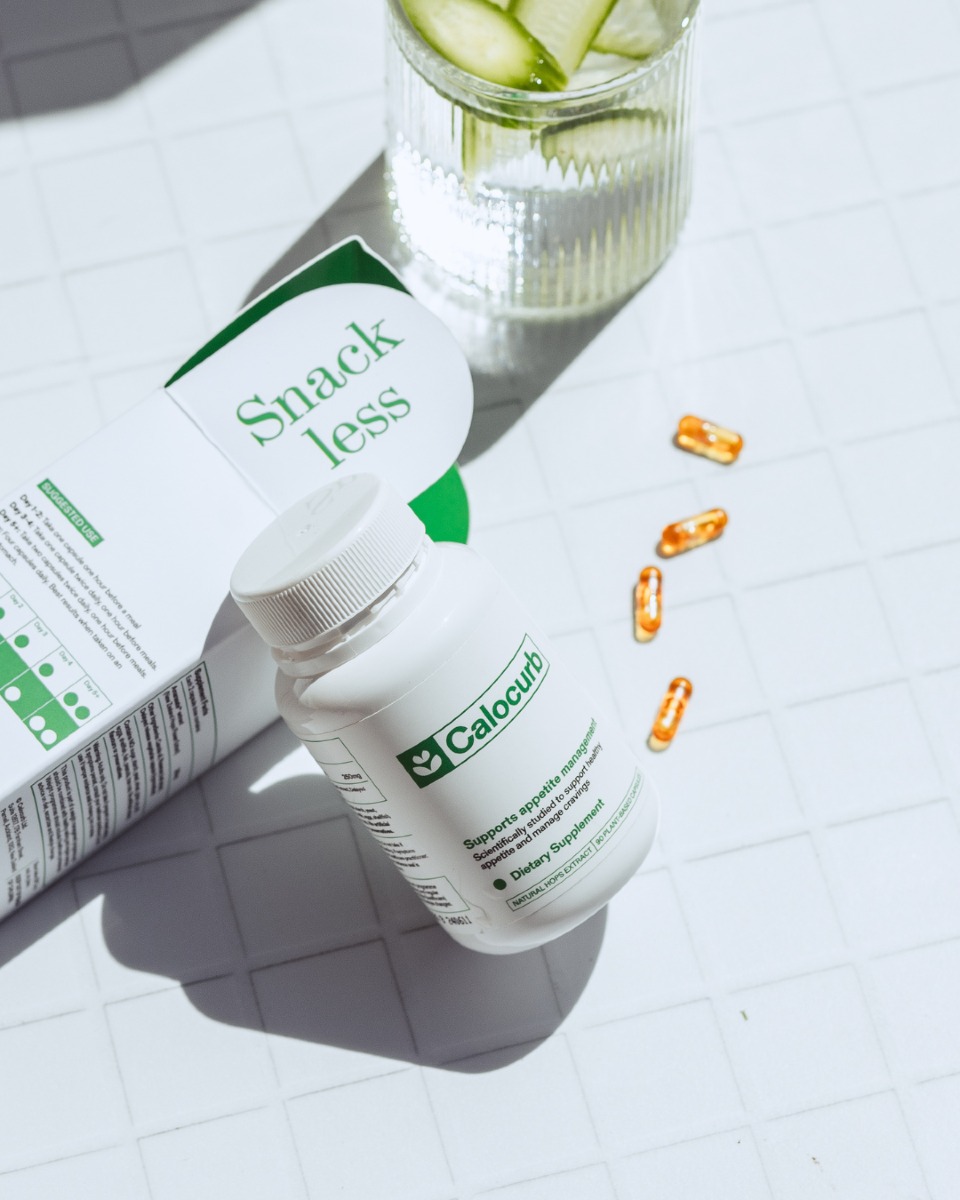

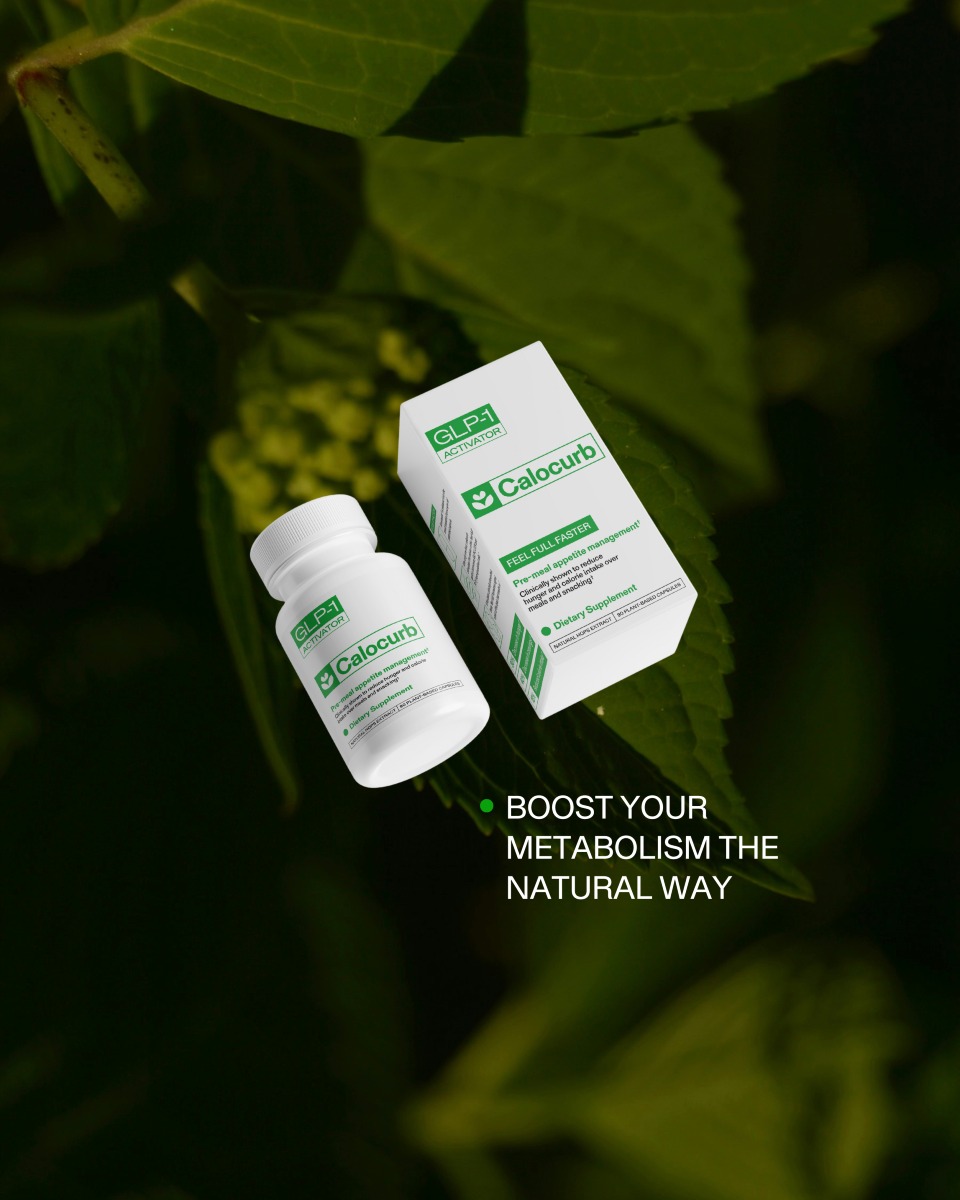

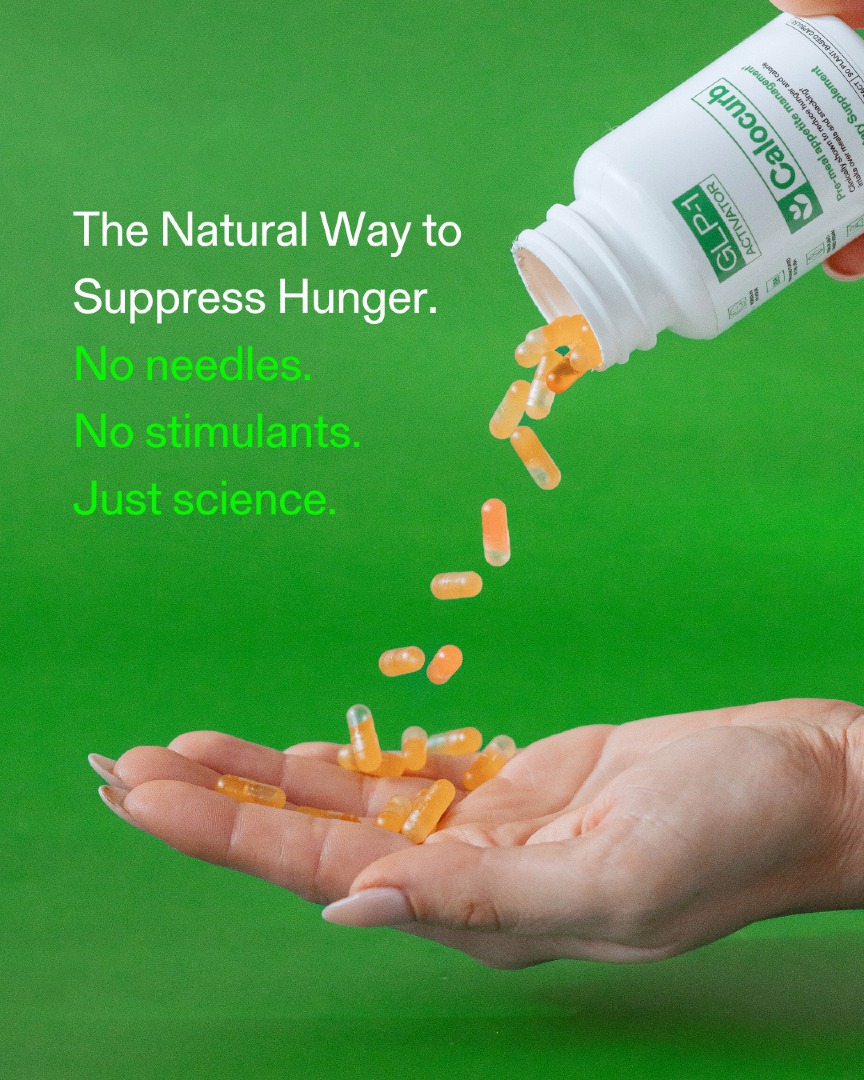
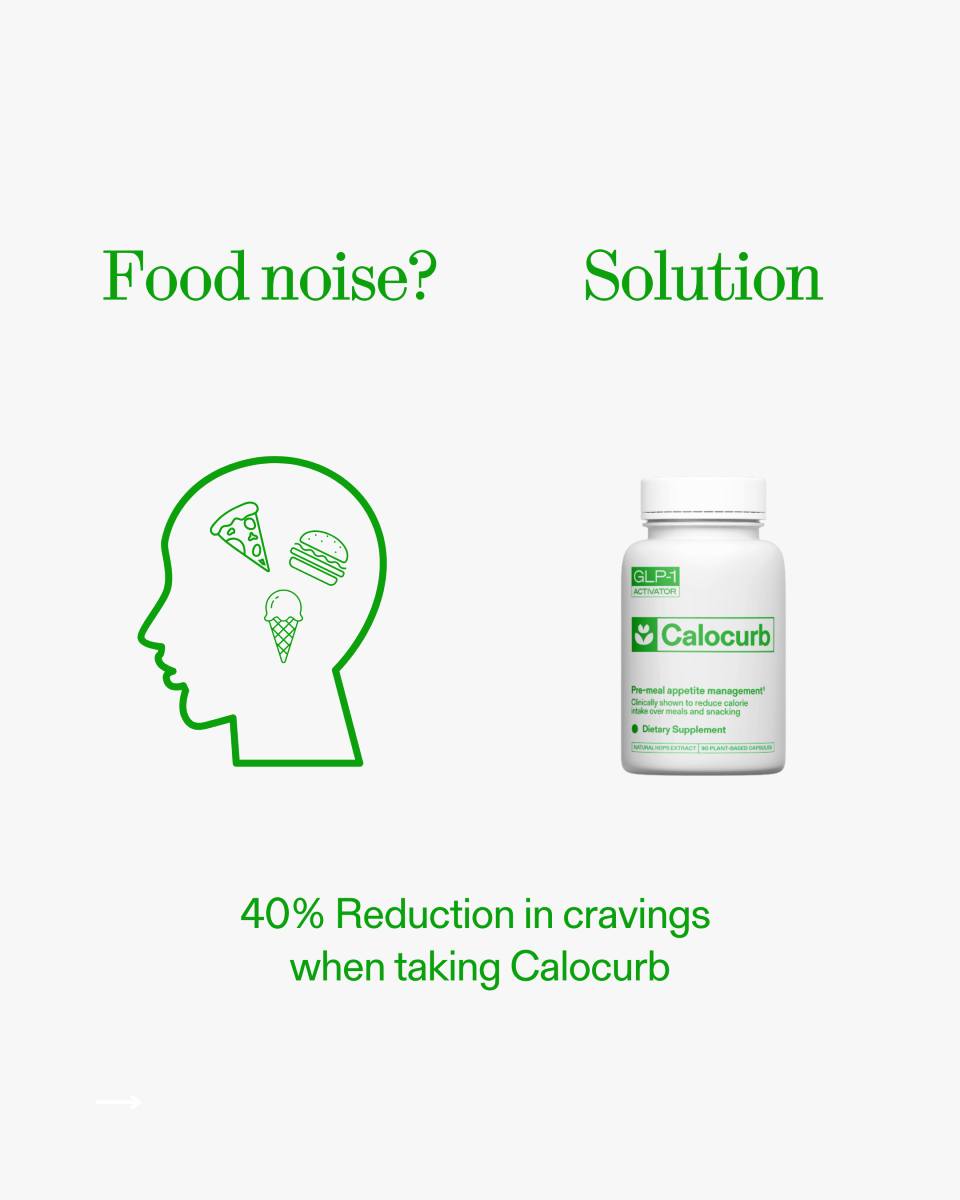
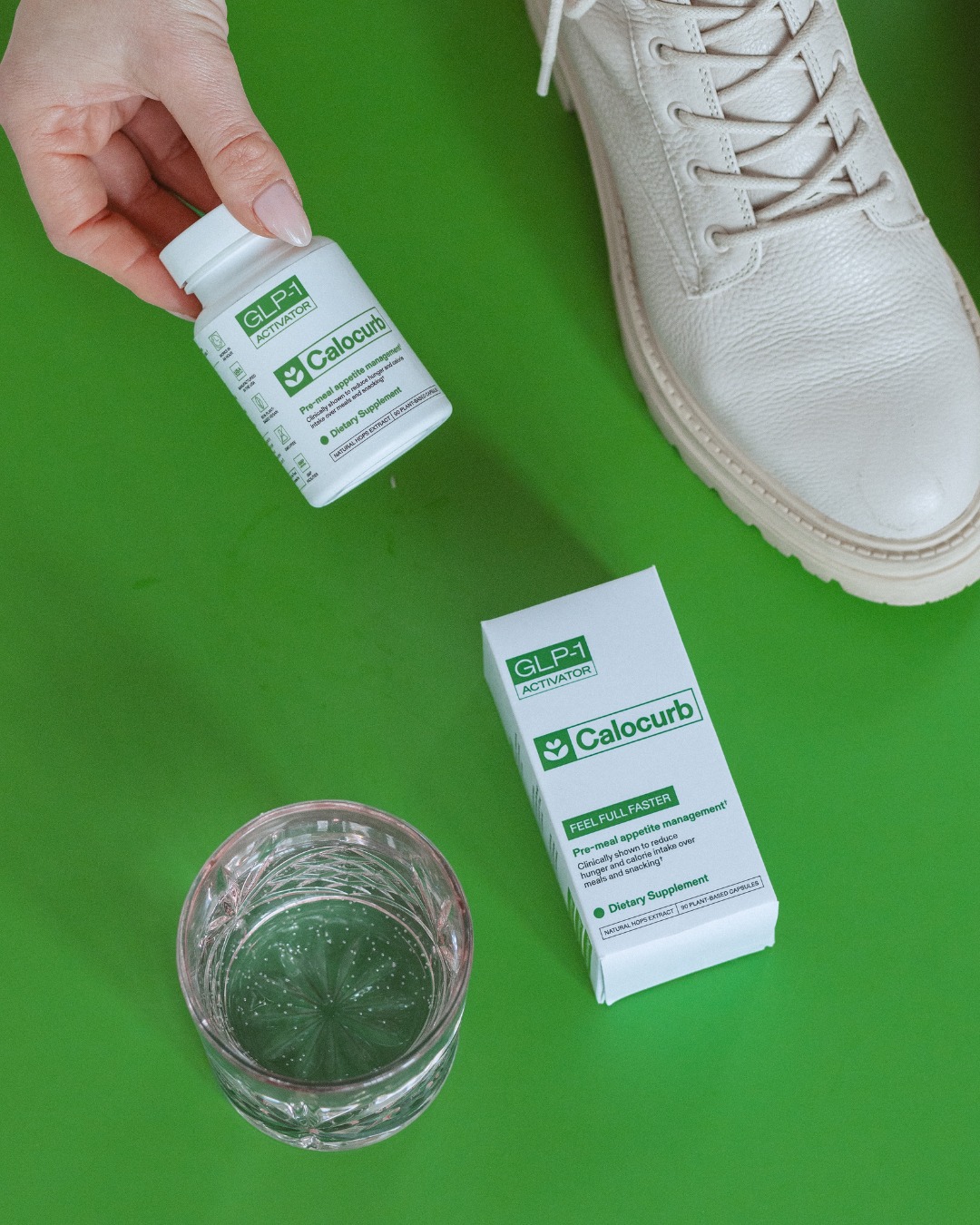


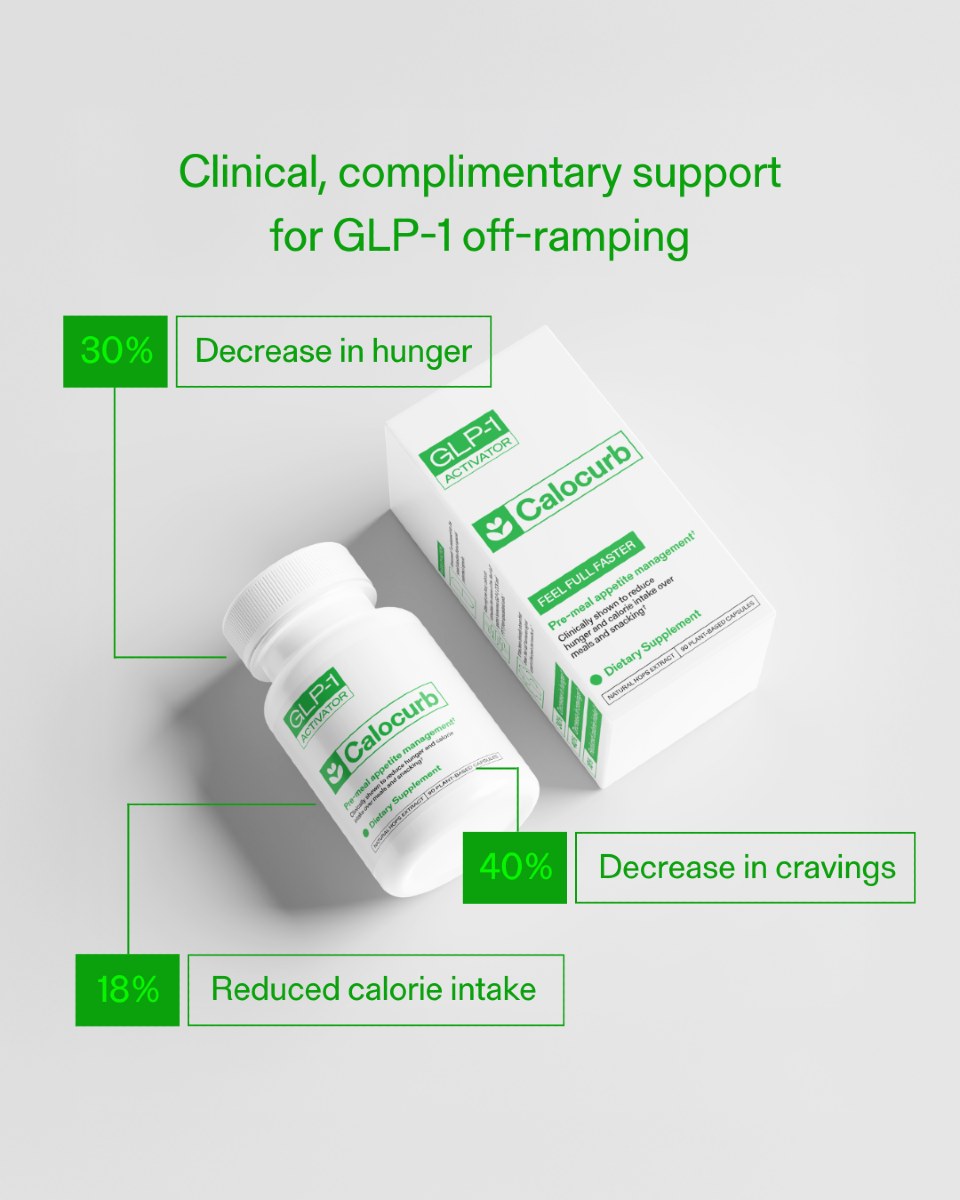

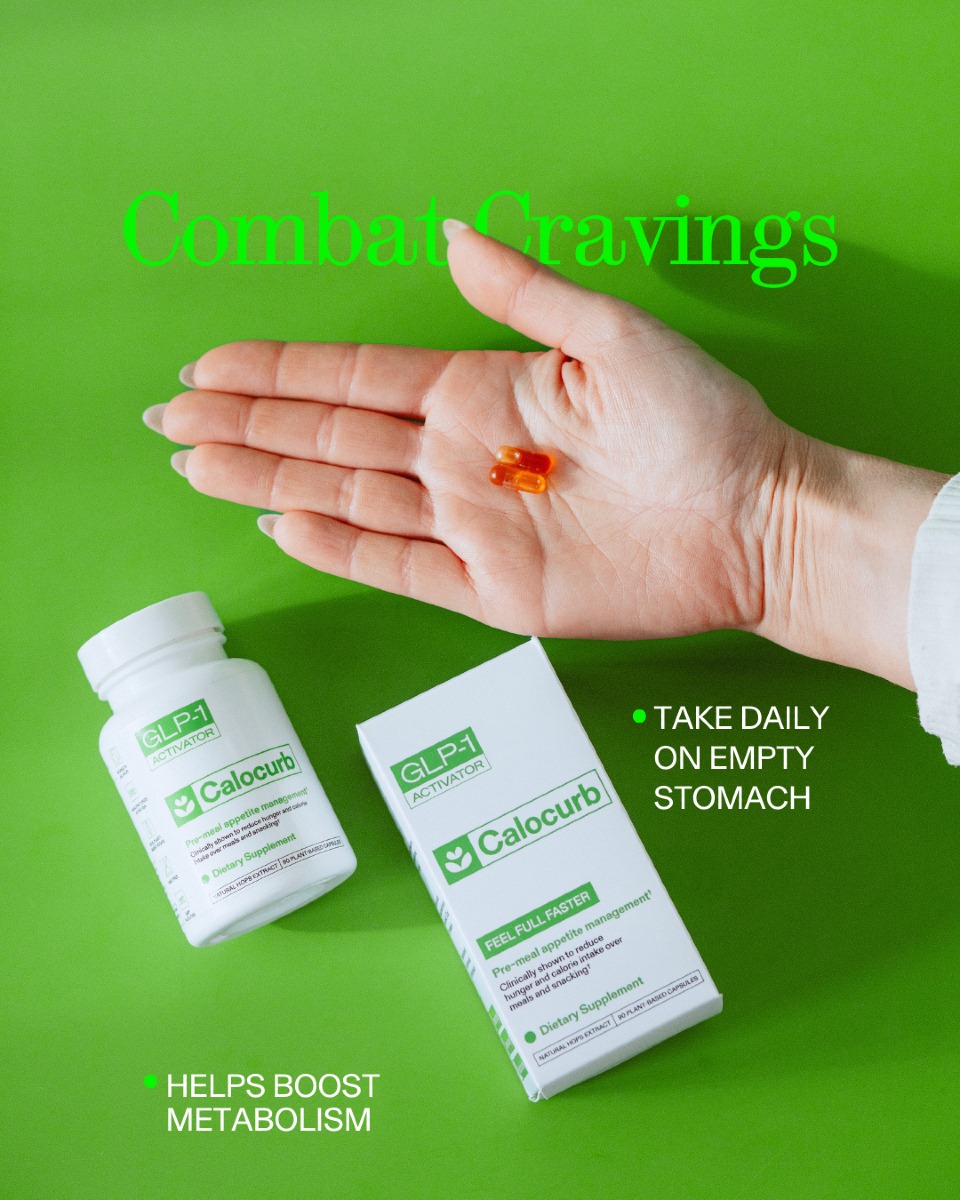
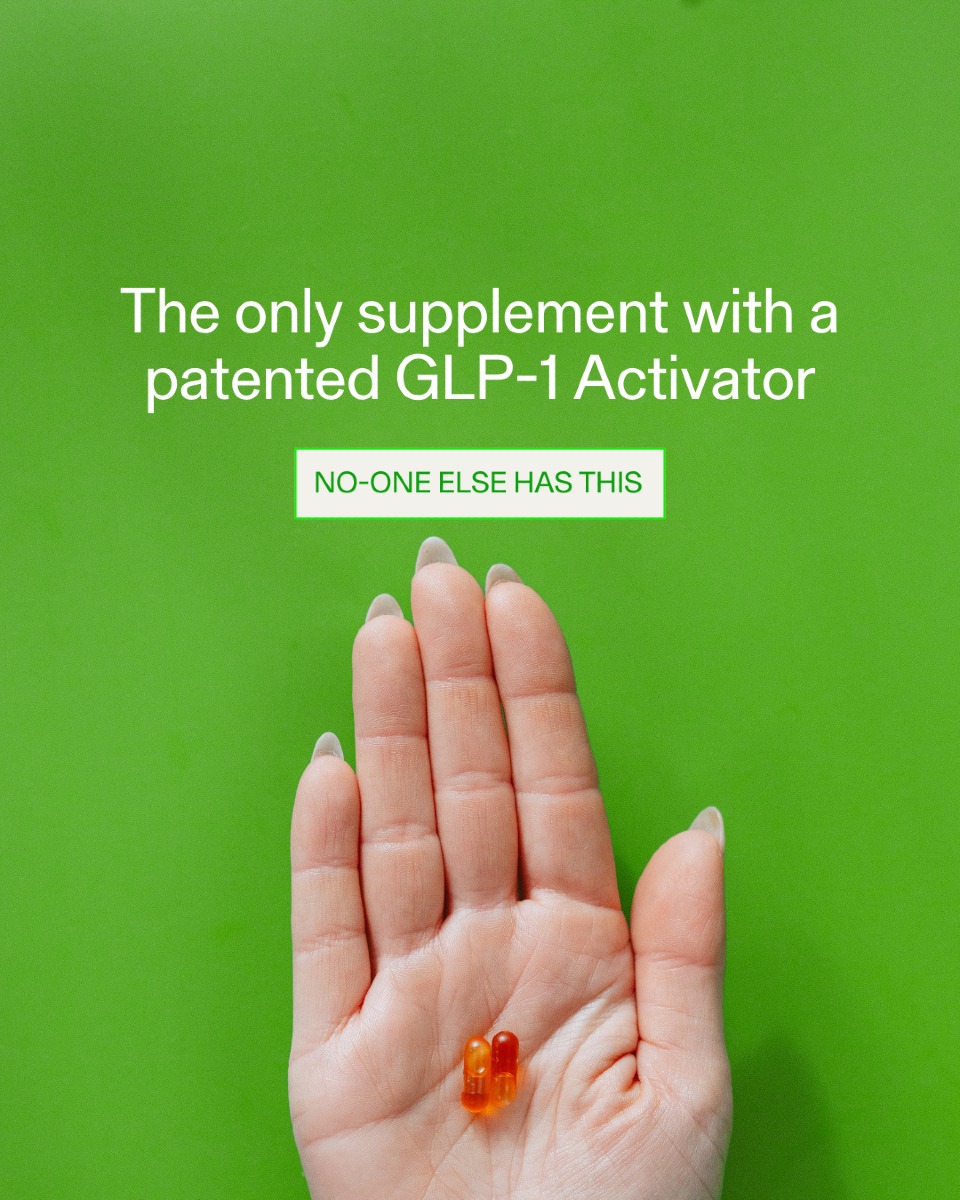



Comments and Discussion (Powered by the PricePlow Forum)